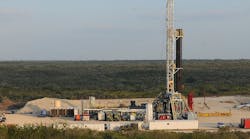The Federal Trade Commission said it plans to be more sophisticated in the way it monitors gasoline price spikes.
FTC Chairman Timothy Muris late last month said that the commission's monitoring efforts will include the use of a statistical model to track gasoline price spikes on a "real-time" basis that regulators can use to monitor market factors more quickly.
The model will use data from the Oil Price Information Service (OPIS) on daily average retail prices for about 360 cities, as well as data on daily average wholesale (rack) prices for 20 key urban areas across the country, representing about 40% of all US gasoline stations, FTC said.
Muris's comments were part of a 2-day public conference the agency held on gasoline pricing. FTC also plans two new gasoline pricing-related projects due for release later this year. The first will use 1985-2000 data to update the FTC's previous oil merger reports of 1982 and 1989, and the second will be an agency review of the "complex interaction" of factors that affect the prices of refined petroleum products.
Election-year issue
Higher-than-normal spring gasoline prices this year led regulators and lawmakers to consider that they have a serious election-year issue on their hands.
And although prices have stabilized recently, both FTC and Congress recall highly publicized gasoline price spikes last year, particularly in key Midwestern swing states that may help decide control of a closely divided Congress this November.
On Apr. 29, Sen. Carl Levin (D-Mich.), chairman of the Senate Permanent Subcommittee on Investigations, released a report alleging that increasing consolidation of the refining industry has led suppliers to increase prices by reducing supply.
He severely criticized the FTC-condoned practice of "zone pricing" that allows marketers to charge different prices for gasoline to different station operators, some even nearby. Levin said oil companies use this practice in order to "confine price competition to the smallest area possible and to maximize their prices and revenues at each retail outlet."
The report said that, over recent years, oil companies have sought to circumvent antitrust laws by shrinking the size of the zone in some cases to just one retail outlet.
The report was unveiled the day before hearings were slated to update the public on the subcommittee's 10-month investigation into gasoline prices.
Levin's staff analyzed data obtained from OPIS and the US Energy Information Administration. The subcommittee also issued subpoenas to a number of major oil companies and one pipeline company for "relevant" refining and marketing documents from 1998 through 2001.
Levin directed his staff to launch an investigation in June 2001 following dramatic gasoline price spikes in the Midwest. This spring, prices rose again, and there is concern that part of the reason is the growing consolidation of the oil business, staffers said. Less competition means companies can more easily manipulate prices in a region, they maintain.
No hearings on the gasoline price issue have been scheduled yet in the Republican-led House, but industry officials concede that a further price rise could mean hearings there as well.
Industry refutes claims
Industry, however, refuted the view that a handful of companies conspire to drive up prices, as has been alleged in the past by some consumer groups and environmentalists.
"America's gasoline refiners have cooperated with numerous federal and state investigations over the past 3 decades, all of which have found no evidence of collusion or other anticompetitive activity by the petroleum industry. These investigations have shed light on the many factors that determine the price of gasoline at the pump," American Petroleum Institute said. "Fuel prices are driven by market forces. Because crude oil is the largest nontax cost component of a gallon of gasoline, the price of gasoline is determined largely by the demand and supply of crude oil worldwide."
API Chief Economist John Felmy told FTC officials that when they examine factors driving gasoline prices, they should be aware that government requirements to make and distribute 19 different gasolines continue to influence gasoline prices.
Such "boutique" fuels reduce the flexibility that refiners and distributors need to keep gasoline flowing when disruptions affect supplies, he said.
"The problems that cause market volatility are likely to continue until refiners gain greater regulatory flexibility to decide how best to fully meet all clean-air goals," API added.

